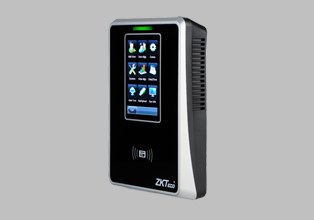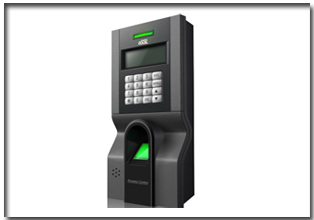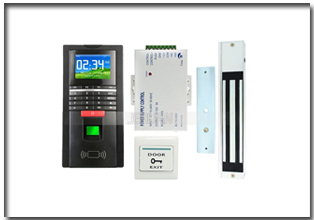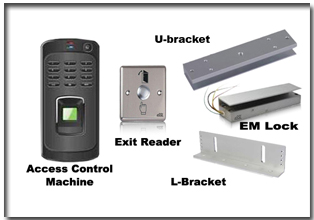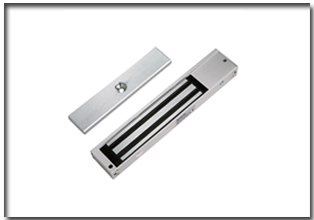Bio Cum Access Control Machine
Bio-Matrix Access Control System . These systems are extremely easy to operate and maintain . Our Detection Bio-Matrix Access Control Systems are in compliance with the different standards of the industry . Clients can avail from us this range of Detection Bio-Matrix Access Control System at most affordable prices.
Biometric technologies include fingerprint , hand geometry , voice recognition , retinal scan , and any other method of identification based on unique personal characteristics , Biometric solutions consist of a reader that compares a user-selected template against the measured features of the actual person . Templates may be called up in a system manually by entering a PIN number or automatically by using bar code , magnetic stripe , smart card or proximity identification technologies .
Physical access control is a matter of who , where, and when . An access control system determines who is allowed to enter or exit , where they are allowed to exit or enter , and when they are allowed to enter or exit . Historically , this was partially accomplished through keys and locks . When a door is locked , only someone with a key can enter through the door , depending on how the lock is configured . Mechanical locks and keys do not allow restriction of the key holder to specific times or dates . Mechanical locks and keys do not provide records of the key used on any specific door , and the keys can be easily copied or transferred to an unauthorized person . When a mechanical key is lost or the key holder is no longer authorized to use the protected area , the locks must be re-keyed .
Electronic access control uses computers to solve the limitations of mechanical locks and keys . A wide range of credentials can be used to replace mechanical keys . The electronic access control system grants access based on the credential presented , When access is granted , the door is unlocked for a predetermined time and the transaction is recorded . When access is refused , the door remains locked and the attempted access is recorded , The system will also monitor the door and alarm if the door is forced open or held open too long after being unlocked .
Biometric technologies include fingerprint , hand geometry , voice recognition , retinal scan , and any other method of identification based on unique personal characteristics , Biometric solutions consist of a reader that compares a user-selected template against the measured features of the actual person . Templates may be called up in a system manually by entering a PIN number or automatically by using bar code , magnetic stripe , smart card or proximity identification technologies .
The block diagram illustrates the two basic modes of a biometric system . First , in verification (or authentication) mode the system performs a one-to-one comparison of a captured biometric with a specific template stored in a biometric database in order to verify the individual is the person they claim to be . Three steps are involved in the verification of a person. In the first step , reference models for all the users are generated and stored in the model database. In the second step , some samples are matched with reference models to generate the genuine and impostor scores and calculate the threshold , Third step is the testing step . This process may use a smart card , username or ID number to indicate which template should be used for comparison. ‘Positive recognition' is a common use of the verification mode, "where the aim is to prevent multiple people from using the same identity".
The first time an individual uses a biometric system is called enrollment , During the enrollment , biometric information from an individual is captured and stored , In subsequent uses , biometric information is detected and compared with the information stored at the time of enrollment . Note that it is crucial that storage and retrieval of such systems themselves be secure if the biometric system is to be robust , The first block (sensor) is the interface between the real world and the system ; it has to acquire all the necessary data . Most of the times it is an image acquisition system , but it can change according to the characteristics desired . The second block performs all the necessary pre-processing :
it has to remove artifacts from the sensor , to enhance the input (e.g. removing background noise) , to use some kind of normalization , etc . In the third block necessary features are extracted . This step is an important step as the correct features need to be extracted in the optimal way. A vector of numbers or an image with particular properties is used to create a template , A template is a synthesis of the relevant characteristics extracted from the source . Elements of the biometric measurement that are not used in the comparison algorithm are discarded in the template to reduce the file size and to protect the identity of the enrollee .


